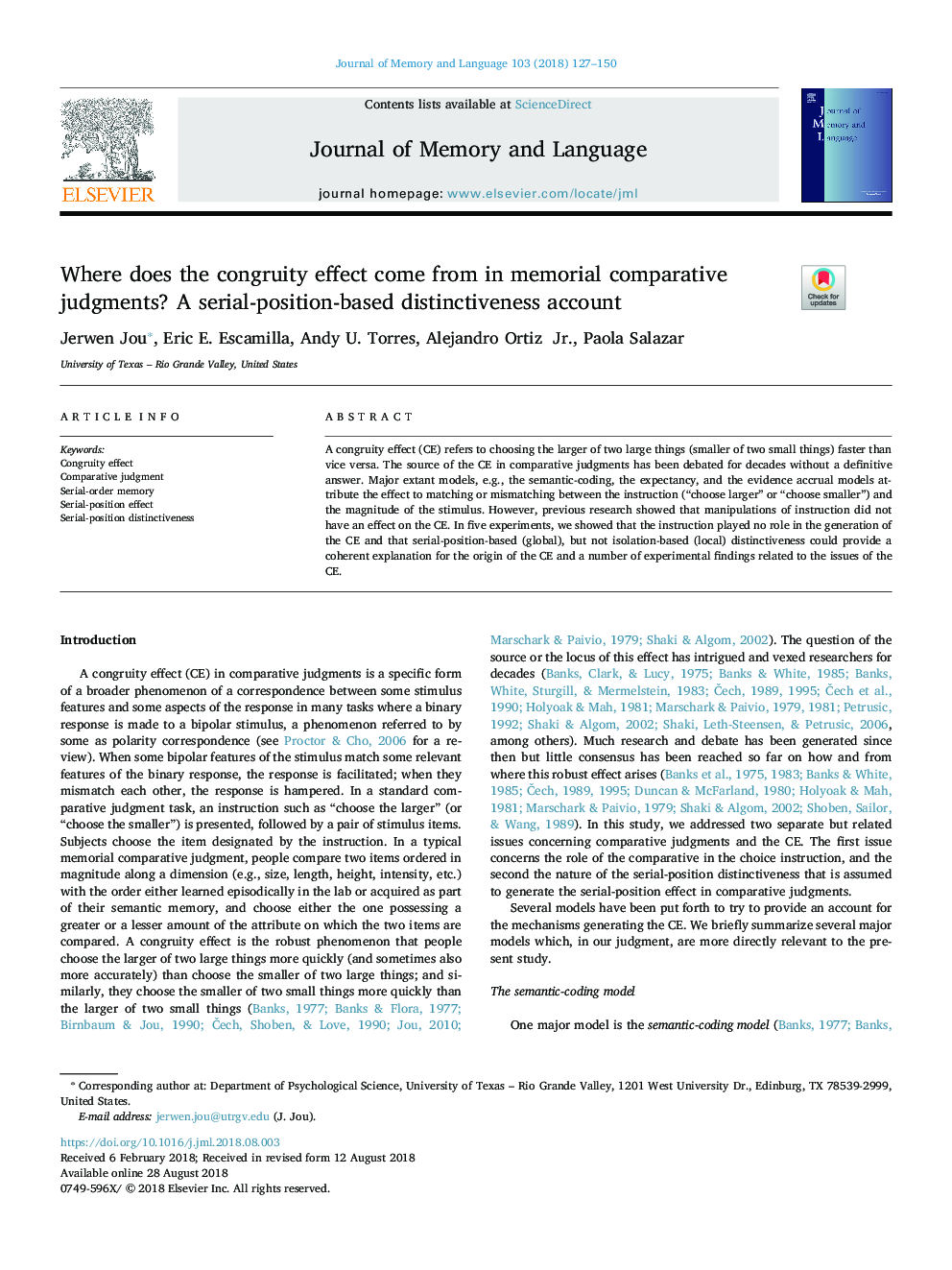| Article ID | Journal | Published Year | Pages | File Type |
|---|---|---|---|---|
| 9953007 | Journal of Memory and Language | 2018 | 24 Pages |
Abstract
A congruity effect (CE) refers to choosing the larger of two large things (smaller of two small things) faster than vice versa. The source of the CE in comparative judgments has been debated for decades without a definitive answer. Major extant models, e.g., the semantic-coding, the expectancy, and the evidence accrual models attribute the effect to matching or mismatching between the instruction (“choose larger” or “choose smaller”) and the magnitude of the stimulus. However, previous research showed that manipulations of instruction did not have an effect on the CE. In five experiments, we showed that the instruction played no role in the generation of the CE and that serial-position-based (global), but not isolation-based (local) distinctiveness could provide a coherent explanation for the origin of the CE and a number of experimental findings related to the issues of the CE.
Keywords
Related Topics
Life Sciences
Neuroscience
Cognitive Neuroscience
Authors
Jerwen Jou, Eric E. Escamilla, Andy U. Torres, Alejandro Jr., Paola Salazar,
